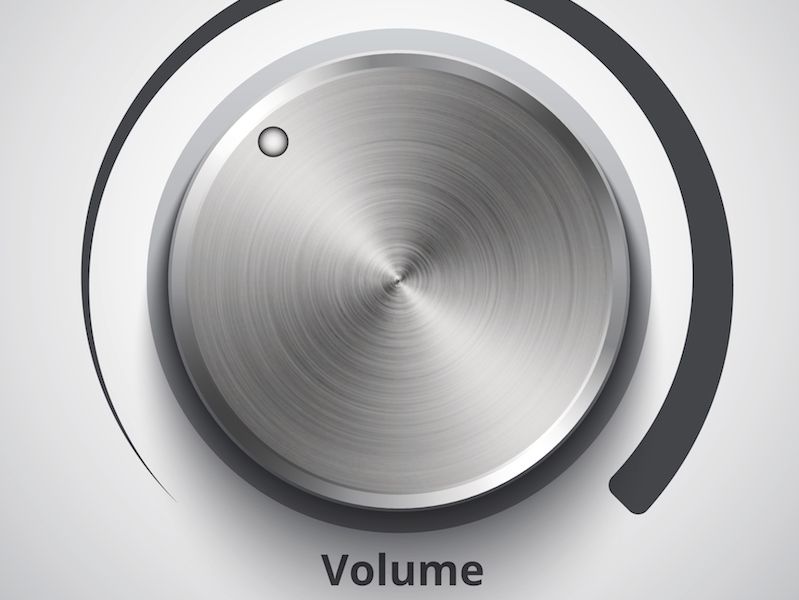
You ever go to the beach and noticed one of those “Beware of Shark” warnings? It’s not hard to realize that you should never dismiss a caution like that. A warning like that (specifically if written in big, red letters) may even make you rethink your swim altogether. For some reason, though, it’s harder for people to heed warnings concerning their hearing in the same way.
Current studies have found that millions of people disregard warning signs regarding their hearing (there’s little doubt that this is a global concern, though these studies were specifically done in the United Kingdom). Knowledge is a huge part of the issue. Fear of sharks is pretty intuitive. But fear of loud noise? And how do you recognize how loud is too loud?
We’re Surrounded by Dangerously Loud Sounds
It isn’t just the rock concerts or the machine shop floors that present dangers to your hearing (not to minimize the hearing risks of these situations). Many common sounds are potentially hazardous. That’s because it’s not exclusively the volume of a sound that is dangerous; it’s also the duration. Your hearing can be damaged with even low level sounds like dense city traffic if you experience it for more than a couple of hours at a time.
Read on to find out when sound becomes too loud:
- 30 dB: Normal conversation would be at this volume level. At this level, there won’t be a limit to how long you can safely be exposed.
- 80 – 85 dB: An air conditioner, dense traffic, and lawn equipment are at this level of sound. This level of sound will normally become harmful after two hours of exposure.
- 90 – 95 dB: A motorcycle is a practical illustration of this sound level. This amount of exposure gets hazardous in as little as 50 minutes of exposure.
- 100 dB: An oncoming subway train or a mid-sized sports event are at this volume (depending on the city, of course). 15 minutes of exposure will be enough to be dangerous at this sound level.
- 110 dB: Do you ever crank the volume on your earpods up as high as it will go? On most smartphones, that’s about this volume. 5 minutes will be enough to be dangerous at this volume.
- 120 dB and over: Any sound over 120 dB (think loud rock show or very large sporting events) can produce immediate damage and pain in your ears.
How Loud is 85 Decibels?
Generally speaking, you should look at anything 85 dB or above as putting your ears in danger. But it can be difficult to distinguish how loud 85 dB is and that’s the difficulty. It’s not tangible the way that a shark is tangible.
And that’s one reason why hearing cautions commonly go ignored, particularly when the sound environment isn’t loud enough to cause pain. There are a couple of possible solutions to this:
- Adequate signage and training: This particularly refers to workspaces. Signage and training can help reinforce the significant dangers of hearing loss (and the advantages of protecting your hearing). Additionally, just how noisy your workspace is, can be clarified by signage. Training can tell employees when hearing protection is needed or recommended.
- Download an app: There isn’t an app that will directly protect your ears. But there are a few sound level metering apps. Injury to your hearing can occur without you recognizing it because it’s difficult to recognize just how loud 85 dB feels. Utilizing this app to monitor noise levels, then, is the solution. Utilizing this method will make it more instinctual to recognize when you are going into the “danger zone”. (Or, the app will simply let you know when things get too noisy).
When in Doubt: Protect
Signage and apps aren’t a foolproof solution. So make the effort to protect your hearing if you have any doubt. Noise damage, over a long enough time period, can result in hearing loss. And nowadays, it’s never been easier to damage your ears (all you have to do is turn your headphone volume up a little too high).
You shouldn’t increase the volume past half way, particularly if you’re listening all day. If you keep cranking it up to hear your music over background sound you should find different headphones that have noise cancellation.
That’s the reason why it’s more important than ever to identify when loud becomes too loud. Increasing your own understanding and recognition is the key if you want to do that. Safeguarding your ears, using ear protection, or decreasing your exposure, is pretty simple. But you have to recognize when to do it.
That should be easier these days, too. That’s even more relevant now that you have some insight.
Think you could have hearing loss? Make an appointment.

